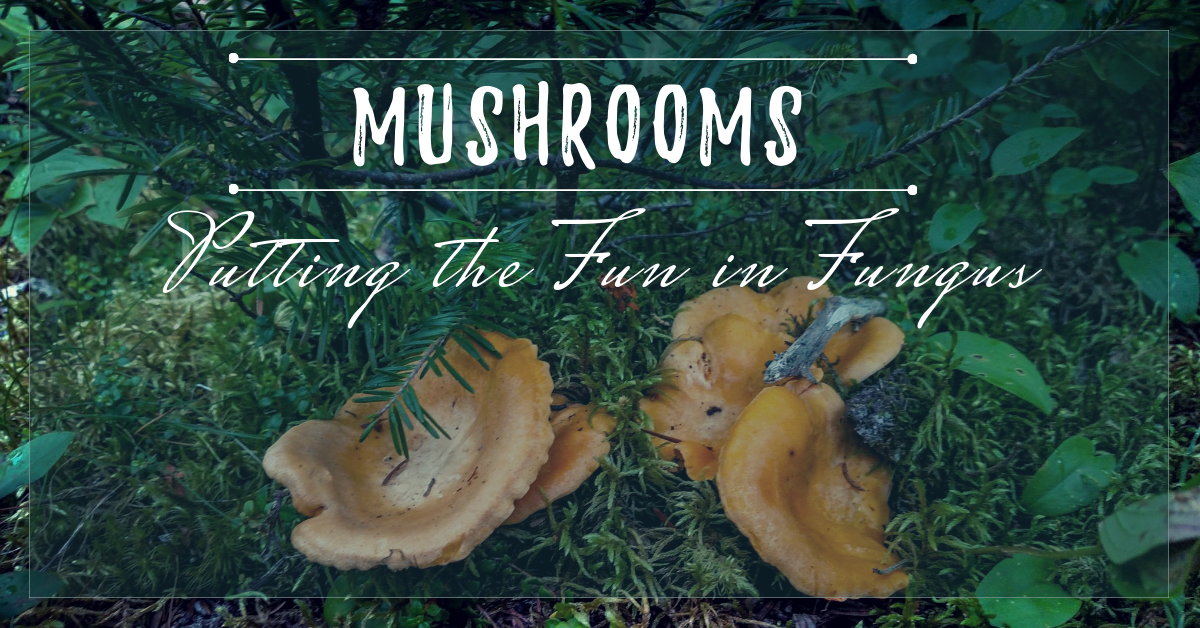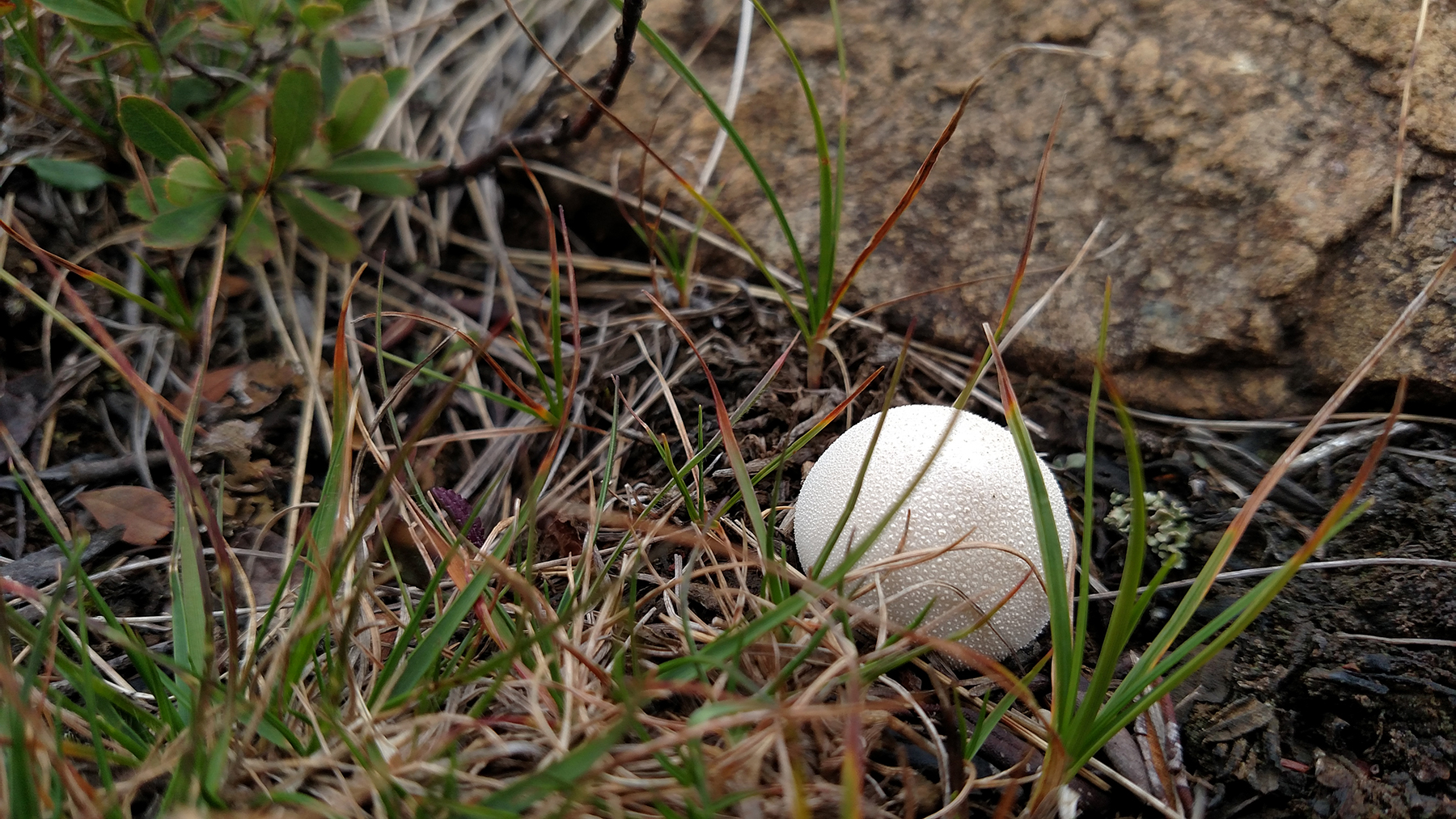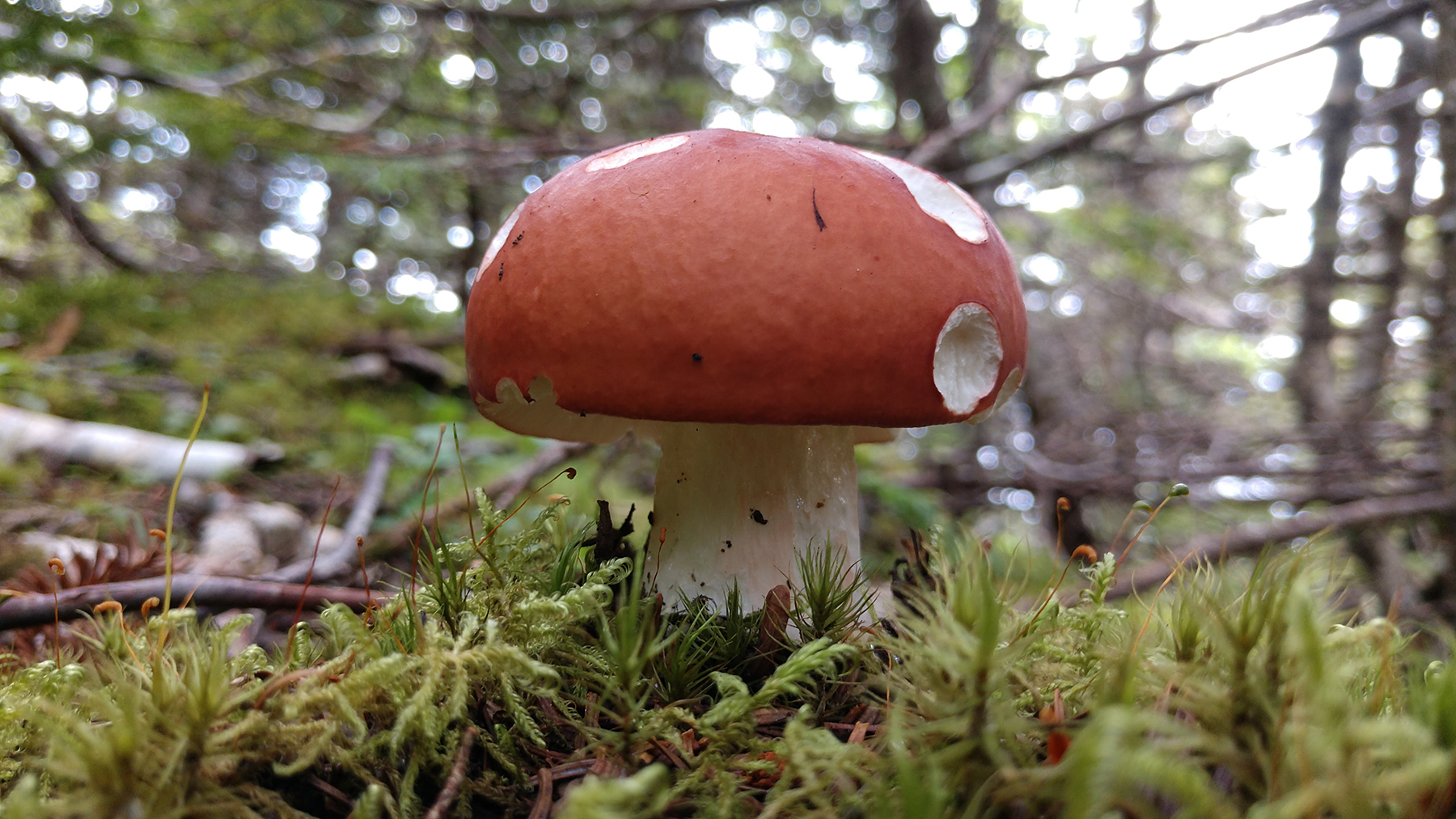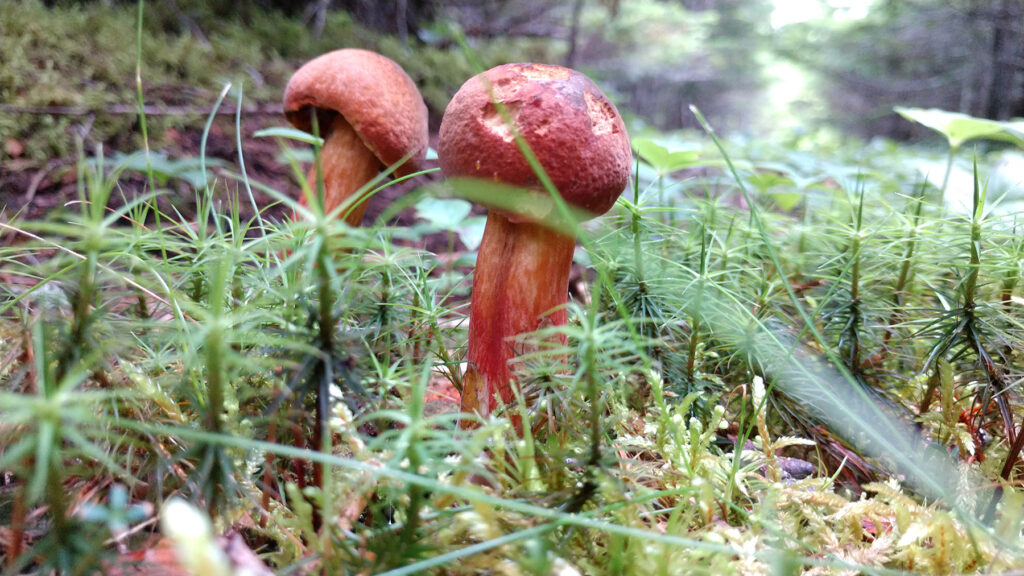By Sara Jenkins
Posted August 5, 2018

Nothing signals the end of summer quite like the appearance of mushrooms along the trails in Newfoundland! Orange, yellow, red, purple, brown, pink or white — mushrooms and their fungal relatives are found in almost every environment in Newfoundland, from the inhospitable heights of the Tablelands in Gros Morne National Park, to the lush, moss-carpeted hillsides around St. John’s. Beyond the highly sought-after edible species, there are thousands of other wild mushroom species deserving of attention for their variety in colour, shape, and habitat adaptation alone.

What is a mushroom?
Mushrooms are the fruiting body (reproductive structures) of some kinds of fungus. Think of them as the flower of a fungus. The mushroom releases spores, which is how the fungus reproduces. The microscopic spores are carried by the wind or transported by animals, and can germinate new fungal individuals if they land in favourable environments.
The mushroom itself is formed from a tiny bundle of cells underground that grows upward and outward by absorbing water and swelling very rapidly. This is why they seem to appear so suddenly; their cells don’t have to divide like most organisms, but actually just expand like water balloons. Some mushrooms can pop out in as little as 24 hours, which is why you can hike your favorite trail on Saturday and see nothing, but the same trail on Sunday is a carpet of mushrooms!

Hidden world below the mushroom
Undeground, the mushroom is growing from fine, hair-like strands of fungus called mycelia (singular: mycelium). Compared to the relatively small size of a mushroom, mycelia may stretch for meters or more underground in the soil, and is the main body of the organism. In fact, a single honey fungus organism in the Blue Mountains of Oregon, USA is thought to be the largest organism in the world—stretching over 3.8 km in diameter underground!
Because fungi don’t rely on chlorophyll for nutrients like green plants, which convert the sun’s energy into food for nutrients, they get their food from breaking down organic materials in the soil (like wood or animal droppings), sometimes in a helpful way by adding important nutrients to the soil, and sometimes by parasitically preying on trees and eventually killing them. Other fungi have mutually-beneficial relationships with trees. This type of fungus is termed mycorrhizal, and these are generally the mushroom-producing fungi. This helpful relationship explains why many mushrooms are found beneath certain tree species; the mycelium underground gets its sugars for energy from the tree roots while providing vital elements like nitrogen and phosphorus to the tree by decomposing nearby organic material. These lucky trees have their own personal compost piles around their roots!
How can you identify a mushroom?
Mushroom species are identified by body colour, smell, taste, spore color, and combinations of distinctive features shown in the schematics below.


Most mushrooms have gills that release their spores, but others have fine tubular pores (e.g., Boletus sp.) or even pointy teeth (e.g., Hydnum sp.) under the cap instead. Some mushrooms will produce a blue stain when you bruise them. Some mushrooms bleed a “milk” when you rip their gills. Still others have slick, slimy caps. There is even a dark purple mushroom with a cap texture like a fluffy purple towel.
You can become familiar with basic mushroom features by examining the mushrooms at your local grocery store, which may include commonly edible species such as button mushrooms, oyster mushrooms, and shitake mushrooms. And while you’re there, go ahead and give them a sniff. They probably smell earthy, but some wild mushrooms can smell like fresh apricots or even cinnamon candies!

Learn more about identifying your local mushrooms:
– Consult a guidebook, such as A Little Illustrated Book of Common Mushrooms of Newfoundland and Labrador (A. Voitk) ISBN 978-0-9699509-4-3;
– Join the Foray Newfoundland and Labrador group of mushroom enthusiasts and scientists and maybe join them on their annual species collection and identification trip. The group also maintains an excellent photo reference for NL species on Flickr;
– Check out the amazing variety in the Mushrooms of Newfoundland and Labrador Flickr gallery;
– Or join the NL mushrooms Facebook Group to consult with your peers about identifying your new fungal friends!
Note: Some mushroom species in North America are poisonous and can cause a range of reactions from stomach upset to death in some cases. Nature NL does not endorse picking or consumption of wild mushrooms. Never pick a mushroom unless you are absolutely sure of your identification.
